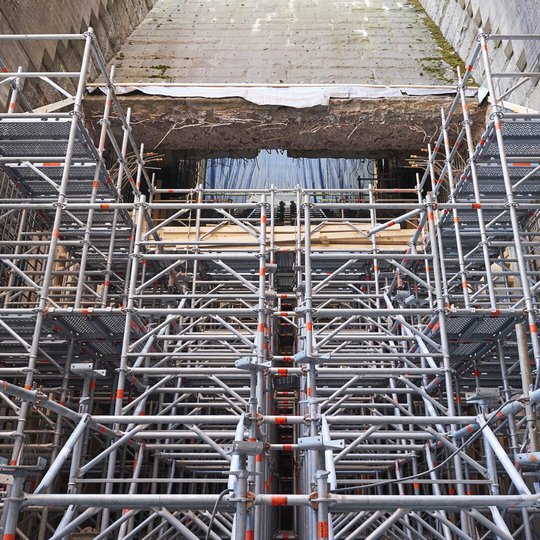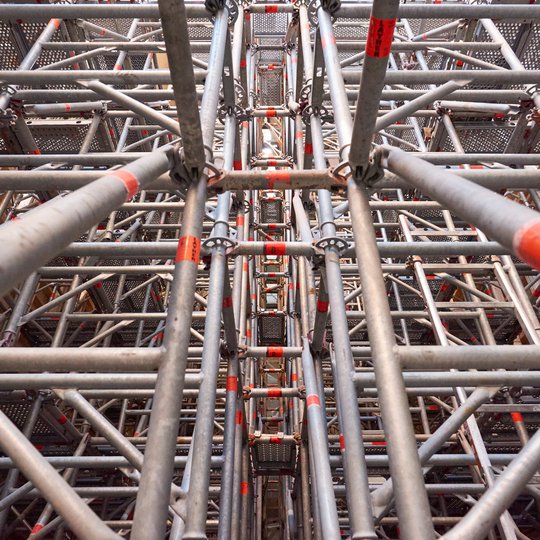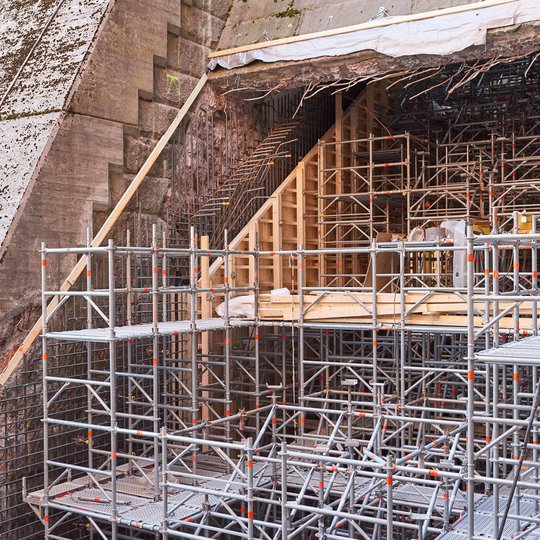


Skanska Talonrakennus will carry out construction work related to the expansion of the new machinery unit of the Harjavalta hydroelectric power plant, completed in 1939. Waterways, inlet and suction pipes and spirals will be built for the new machine unit. Modern scaffolding is needed for the significant investment of the Länsi-Suomen Voima power plant company.

The load capacity of the support racks used in the expansion of the hydroelectric power plant’s machinery unit is over 1,000 tonnes.

The construction project for the Harjavalta hydroelectric power plant in Nakkila, Kokemäenjoki, started in August 2014. The new water turbine is expected to be commissioned in autumn 2016, after which the basic renovation work of two water turbines will be carried out. After an investment of approximately EUR 40 million, the largest hydroelectric power plant in Southern Finland will produce 110 megawatts of renewable energy.
The water turbine will be built next to the existing turbines. “The construction project is demanding and logistically challenging. The scaffolding contractor has delivered various types of scaffolding to the site, and they have also designed the support racks needed to support the concrete vault, which weighs approximately 625 tonnes, for us,” says Petri Puputti Project Engineer at Skanska Talonrakennus.
A protective wall made of light steel has been built on the site. “Our cooperation with Telinekataja started with the scaffolding needed for the demolition of the end wall, and their proposed protective wall proved to be a very good solution for completing the work phase,” says Puputti.
Moulds have been built from the scaffolding and reinforcement and concrete work has been carried out. “We protected the massive casting at the top of the spiral with weather protection so that the concrete work would also progress in winter conditions,” says Marko Härkönen, Work Manager at Telinekataja. “On top of the base, we will install the Layher TG 60 support tower system.”
The TG 60 support towers support a concrete vault that is one metre thick, over 20 m long and 7 m wide. As the inlet pipe joins the clothoid-shaped spiral, the height of the waterway changes from 6 metres to 2 metres, over a distance of 22 metres. It will take five months to build the water turbine’s inlet water channel.
The thickness of the walls of the inlet water pipe is more than half a meter. “A 34-degree slope makes contracting very challenging. Telinekataja offered us a solution that allows us to support the concrete vault and also carry out moulding and reinforcement work on the walls, as well as the concrete work from the same scaffolding,” Puputti emphasises. “In addition to the worktops, the base bracket will be built with extensions, so that the iron reinforcement of the thick walls can be carried out efficiently and safely.”
The load capacity of the support rack is over 1,000 tonnes. “The compatibility of the TG 60 support towers and Allround stand parts enables safe and easy installation of worktops and walkways. Worktops and procession paths installed in this way can be contracted safely,” Härkönen says. “Moving around and working is smooth.”
“The construction is progressing in stages, and it has also been taken into account in the tower division of the support rack,” says Puputti. “It is important that the site has a permanent foreman from Telinekataja, who knows the people operating there and the special features of the construction site. We have gained ideas from their work manager, to improve the cost-effectiveness of contracting. They have thought about the customer’s best interests and reacted quickly in changing situations. Our cooperation has deepened as the contracting progresses and challenges increase.”

The largest power plant in Southern Finland, in Harjavalta, will produce 110 megawatts of renewable energy, after the expansion of the machine unit is completed.